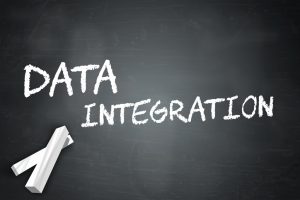 Government agencies, as well as businesses, use data to drive priorities, make strategic decisions, and provide services. But what happens when people within or across agencies draw from different silos of data? How can your organization be efficient and effective when the underlying data isn’t consistent or connected? The following examples show that it’s time to smash data silos to ensure the best possible outcomes.
Government agencies, as well as businesses, use data to drive priorities, make strategic decisions, and provide services. But what happens when people within or across agencies draw from different silos of data? How can your organization be efficient and effective when the underlying data isn’t consistent or connected? The following examples show that it’s time to smash data silos to ensure the best possible outcomes.
Sharing Data in Justice and Law Enforcement
Law enforcement is an obvious area that relies on consistent, accessible data. If law enforcement agents have different data, held in different places, they will take different actions—and possibly miss solving a case altogether. To avoid data silos, law enforcement agents need to share information on cases, incidents, investigations, and processes among all agency personnel, as well as among regional and even national organizations.
Fortunately, many agencies are implementing criminal justice information systems that allow users to aggregate larger amounts of information. This can be analyzed and presented to investigators so they can explore larger patterns and draw more accurate conclusions.

Smashing Data Silos to Support HCBS Programs
Another example includes the state agencies that coordinate Medicaid Home and Community Based Services (HCBS) waiver programs. HCBS waivers allow individuals to be cared for in their homes at a lower or equal cost to that of institutional care, with the additional benefits of greater independence and better access to family and friends.
HCBS programs include highly personalized services that must be coordinated among participants, caregivers, advocates and providers. These services support vulnerable individuals in key areas of their lives. That’s why it is crucial that everyone (including the participant) is working with the same data. Sharing data helps ensure that everyone is on the same page regarding which services an individual is eligible for, which agencies are managing which components of overall care, and what outcomes are being reached.
Aggregating Data in Healthcare
Healthcare organizations are also bursting with varying forms of data, from medical instruments and mobile devices to smart hospital rooms and RFID-based inventory systems. If different systems use different names for patients, diagnoses, or medications, or if the data from these systems isn’t shared and used together, patients can be put at serious risk.
Of course, each of these sources of data is designed to achieve the same result: improve outcomes in such areas as patient care, compliance, financial performance, and patient satisfaction. Eliminating data silos enables them to be used as they were intended.
Swapping Data Silos for Case Management Collaboration
So, how do you smash your data silos? The best way is to adopt interoperable systems that allow you to share data and automate processes. When data isn’t shared or aggregated, it is hard to have a holistic view of any individual participant, get a high-level view of the entire ecosystem, or do system-wide analytics or reporting.
Modernized, shared case management technology enables agencies to share data easily and makes it easy for key stakeholders to access information. Processes can be automated, and data can be more easily analyzed. Reporting and metrics are also easier when everyone is working from the same systems. Depending on your organization, you may want to consider a system that:
- Gives participants access to and control of their own records. In most cases, the person with the most insight and the most interest in making sure records are accurate is the participant receiving the services.
- Gives service providers and case managers access. Systems should give all relevant parties the ability to draw from and contribute to the data to make sure records are complete and accurate.
- Gives agencies the ability to share information. Systems that limit and prevent the sharing of information about clients between organizations and data systems can hobble knowledge workers, limit program success, and impair the organization’s ability to analyze outcomes.
Enterprise case management platforms help people across organizations use the same data, stored in the same place, to take coordinated actions that make sense. As organizations strive to be more collaborative in their use of data, it makes sense to adopt case management functionality to smash silos, share data, and ensure effective, consistent outcomes for citizens.
Meredith Trimble is a GovLoop Featured Contributor. She is a former municipal official and Town Council Acting Chair, who focused on strategic planning, annual budgeting, and bonded infrastructure projects. Her government experience also includes posts in both federal and state-level executive branch agencies: Associate Editor of the U.S. Federal Election Commission’s FEC Record; and Director of Education for the CT Office of State Ethics. In her current role as a Senior Content Specialist with Tyler Technologies, Inc., she writes content to help empower those who serve the public. Her current focus is to help facilitate data-enabled organizations as well as to create connections between governments and those they serve. You can read her posts here.





Leave a Reply
You must be logged in to post a comment.